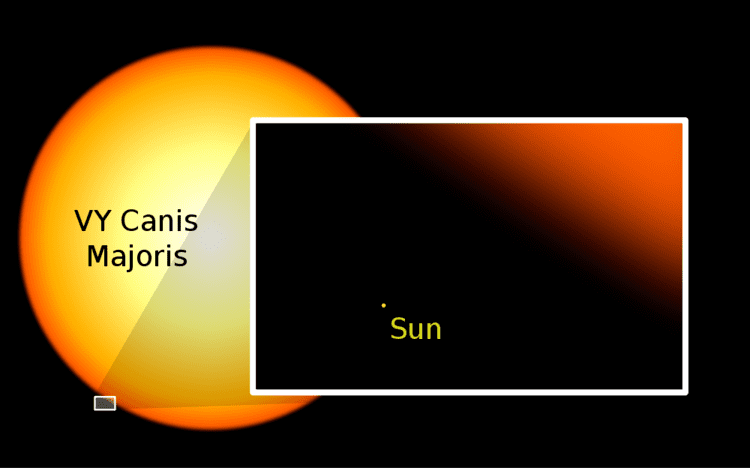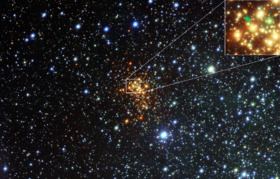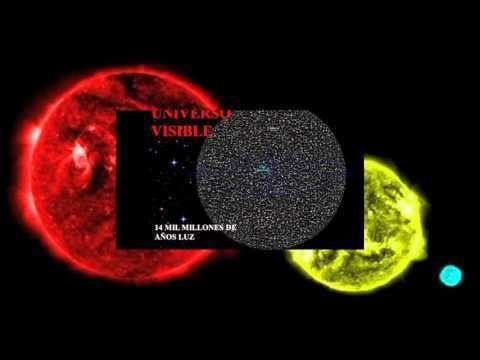U−B color index −7.445 Apparent magnitude (B) 22.1 Apparent magnitude (V) 17.194 | B−V color index +5.000 Apparent magnitude (J) 4.31 | |
 | ||
Similar Westerlund 1, NML Cygni, WOH G64, VX Sagittarii, UY Scuti | ||
westerlund 1 26 que tan peque o es el sol
Westerlund 1-26 or Wd 1-26 is a red supergiant or hypergiant within the outskirts of the Westerlund 1 super star cluster. It is one of the largest known stars discovered so far, although the radius is poorly known. Its size is approximately 1,530 solar radii (1.06×109 km; 7.1 au). If placed at the center of the Solar System, its photosphere would engulf the orbit of Jupiter.
Contents

Discovery

Westerlund 1 was discovered by Bengt Westerlund in 1961 during an infrared survey in the Zone of Avoidance of the sky, described as "a heavily reddened cluster in Ara". The spectral types of the component stars could not be determined at the time except for the brightest star which was tentatively considered type M.

In 1969, Borgman, Kornneef, and Slingerland conducted a photometric survey of the cluster and assigned letters to the stars they measured. This star, identified as a strong radio source, was given the letter "A". This leads to the designation Westerlund-1 BKS A used at Simbad, although the cluster was not known as Westerlund 1 at that time. At the time it was referred to as Ara A, with another strong radio source in the cluster called Ara C. Its brightness in the radio spectrum makes it one of the rare "radio stars". Westerlund made spectroscopic observations of the cluster, still not known as Westerlund 1, published in 1987 and numbered the stars, giving the number 26 and the spectral type M2I.

Modern terminology stems from 1998 when the cluster was referred to as Westerlund 1 (Wd1), with a paper describing Ara A as star 26 and Ara C as star 9.
Characteristics

The star is located 11,500 light-years from Earth and is almost obscured at visible wavelengths by severe extinction due to interstellar dust, hence it has been studied extensively in the longer infrared to radio wavelengths. The star has the size between over 1,500 R☉ Its spectral type identifies it a red star with a high luminosity. At radio wavelengths it is 310,000 times brighter than the Sun, making its luminosity range somewhere around 380,000 times brighter than the Sun (MV -9.2).
Westerlund 1-26 is classified as a luminous supergiant. With its surface temperature of about 3000 K, it occupies the upper right corner of the Hertzsprung–Russell diagram. The cool temperature means it emits most of its energy in the infrared spectrum. It also shows huge mass loss of atmospheric material, suggesting that it may further evolve into a Wolf–Rayet star. Westerlund 1-26 has been observed to change its spectral class during several periods, but it has not been seen to change its luminosity.
In October 2013, astronomers using the European Southern Observatory's Very Large Survey Telescope (VST) discovered that Westerlund 1-26 is surrounded by a glowing cloud of ionized hydrogen. This is the first ionized nebula to have been discovered around a red supergiant star through its optical emission lines, and follows the discovery of an ionized nebula around NML Cyg in 1982. The nebula extends 1.30 parsecs from the star.
